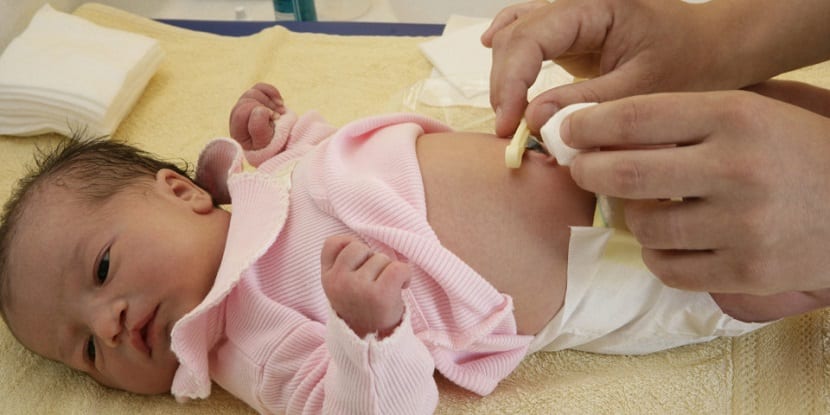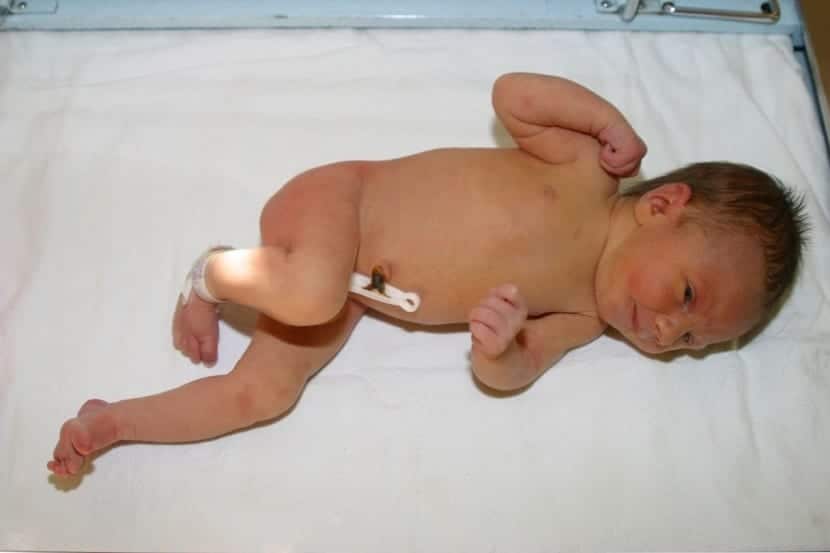
From the baby's navel part that cord that unites the baby with the mother, during the many weeks of gestation. The umbilical cord is a composition of arteries and veins, by which the fetus receives all the nutrients and oxygen it needs to develop correctly. As soon as it is born, this natural method of union ceases to function, since the baby will begin to breathe and feed in a different way.
For this reason, a few minutes after birth, the umbilical cord is cut and a clamp designed to stop the bleeding is placed. It is then that a natural process begins, by which, the cord will detach from the baby's body giving way to what will be his navel. But, despite being a natural process, it is still a wound that needs care to heal properly and without the risk of infection.
Caring for your baby's belly button
The umbilical cord it usually takes around 10 days to fall, although it is an estimate since in some cases it may be somewhat less. Even in the case of babies born by cesarean section, it can take 12 to 14 days for the cord to completely detach.

Navel care must be extreme from the first moment, since the skin must always be clean and dry to avoid infections. But in addition, it is essential to take into account that when it falls, the baby's navel is an open wound and it must be cared for and protected until it heals completely. It will be enough to clean the wound well with water and a neutral soap and make sure to dry very well. This will prevent the proliferation of fungi and other bacteria that can interfere with wound healing.
Before i fall umbilical cord, it is necessary to protect the stump so that it comes off naturally without harming the baby.
Umbilical stump care
Although in the past it was recommended not to wet that area of the baby's body until the cord had fallen, today the advice of midwives is completely contrary. Namely, from the first day you can bathe your baby normally, wetting her belly without any fear. You just have to make sure not to force the fall and to dry the baby's skin very well after each bath.
In addition, every time you change her diaper you will have to perform a cure:
- Wash your hands very well, using soap to completely sterilize your skin.
- Prepare all the utensils that you may need to have everything at hand, you will need sterile gauze, warm water with a neutral soap or physiological saline and the tools for changing the diaper.
- Gently lift the plastic clip and with a gauze soaked in serum or with a small amount of soap, clean the skin of the navel. The use of alcohol or other antiseptic solutions is not recommended.
- With a clean gauze, dries all skin very well.
- Let it air dry for a few minutes before covering the area, so you can ensure that the skin is completely dry.
- When putting on the diaper, fold the front part to avoid rubbing the umbilical stump. If it is winter and cold, you can place a sterile gauze on the skin without pressing and dress the baby normally.
When to go to the pediatrician

Very rarely the baby's belly button becomes infected, still, it is important monitor healing to make sure everything is going normally. If you observe these symptoms, go to the pediatrician so that he can carry out the pertinent review.
- If you observe redness at the base of the wound, that is, what will be the navel. In case this suppuration or the baby has a fever, go quickly to the pediatrician, as they are signs of infection.
- In case the wound gives off bad smell
- If it appears a little lump soft, and that it could be a hernia
- In the event that the umbilical cord do not fall after 3 weeks